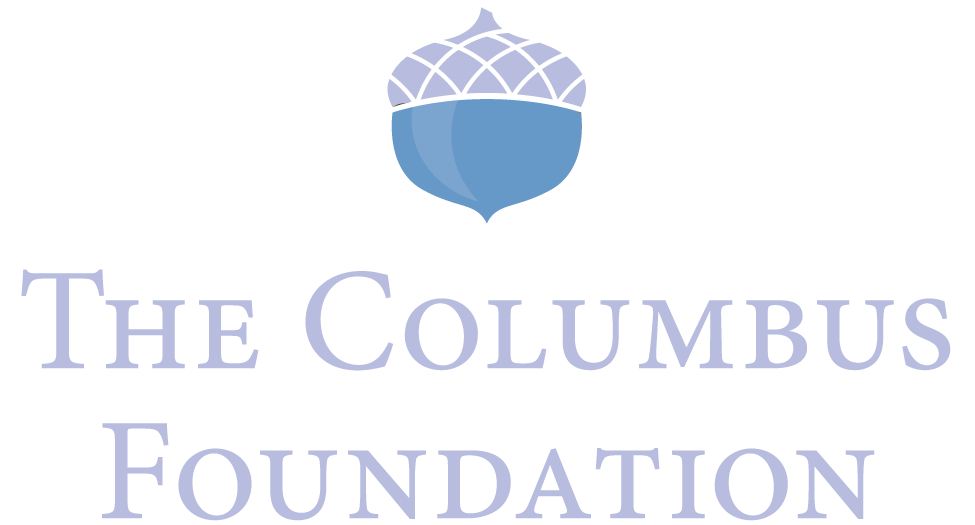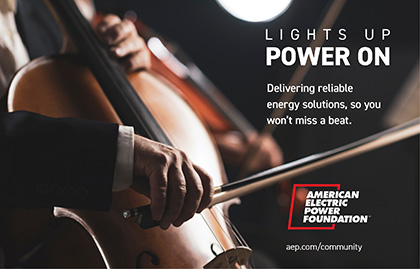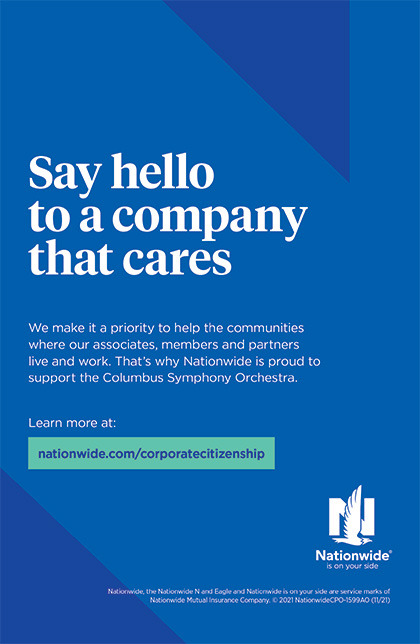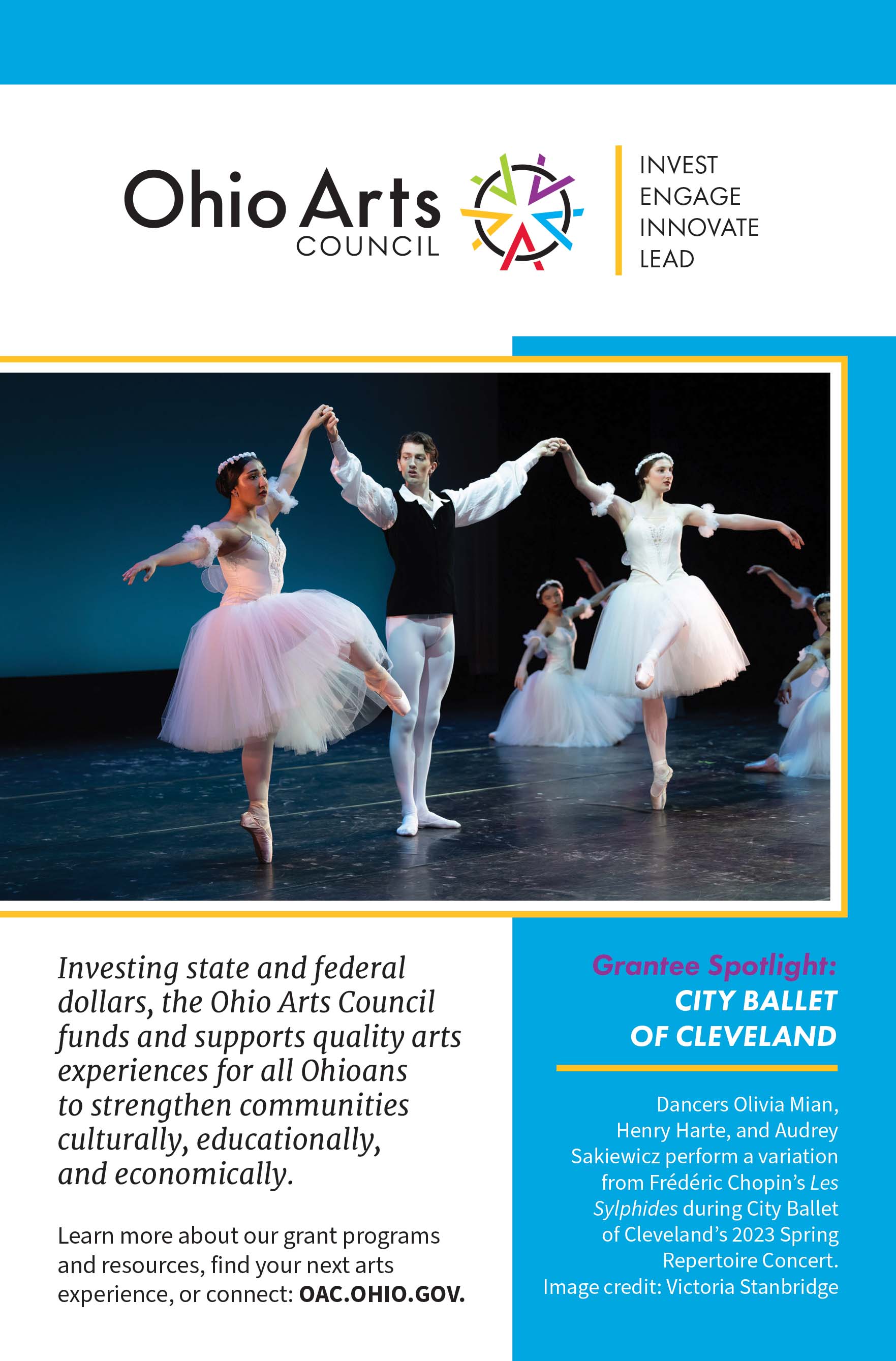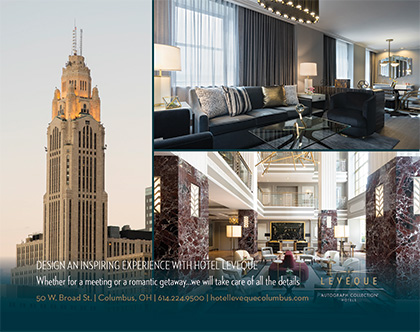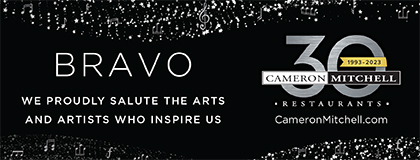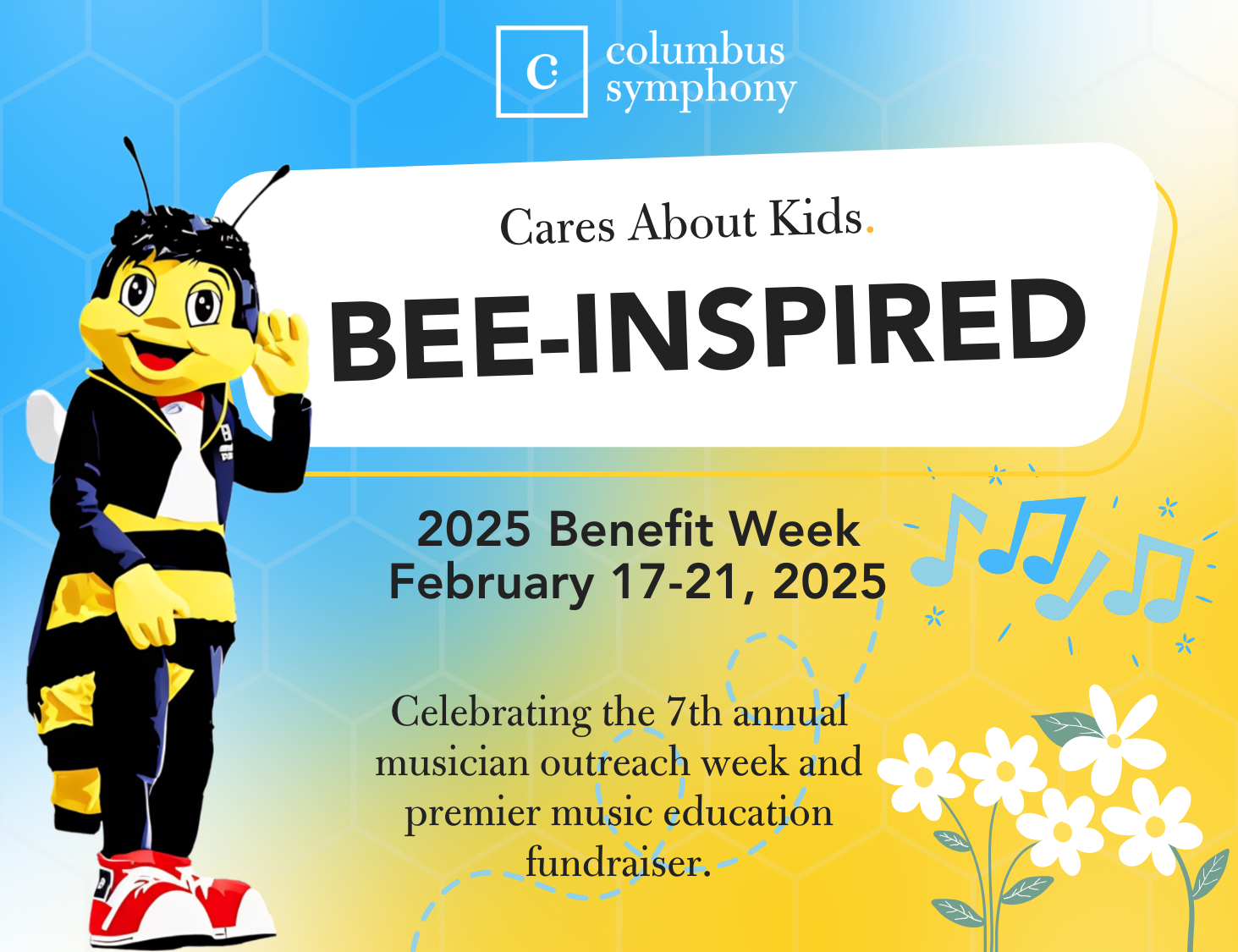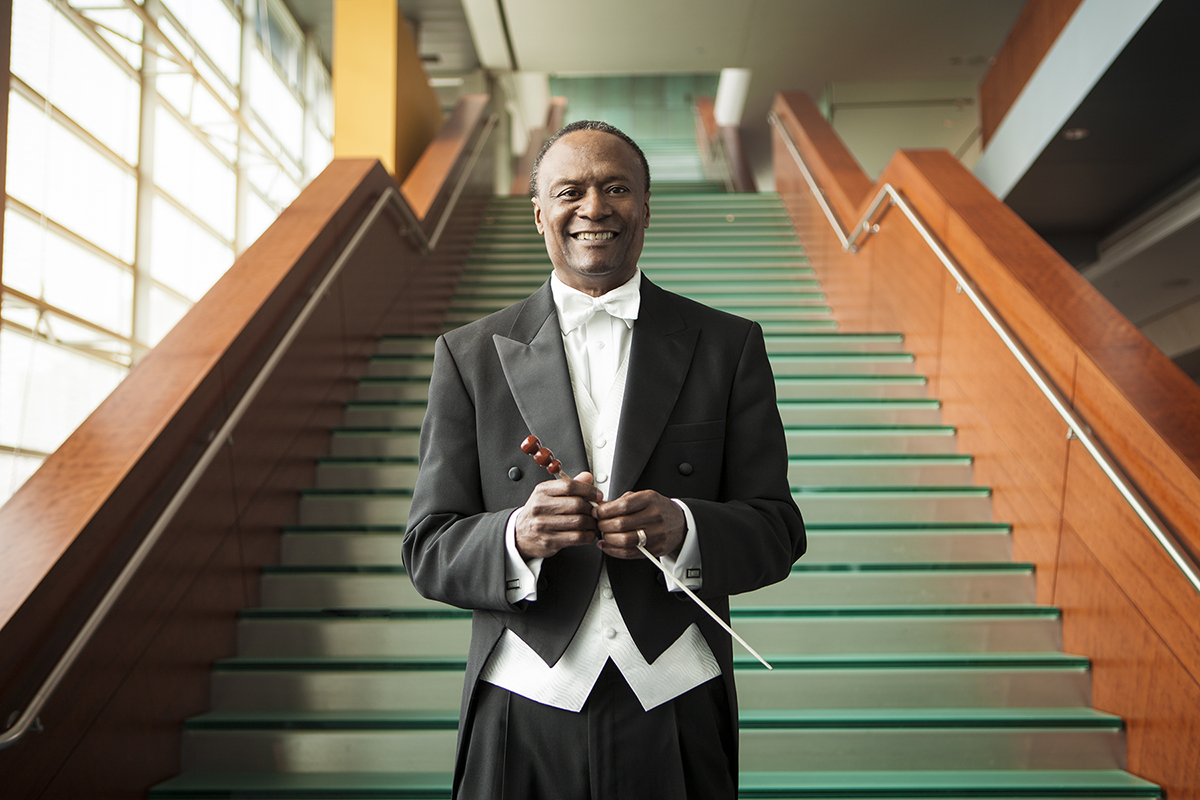

Friday, FEBRUARY 28, 2025, at 7:30PM
SATURDAY, MARCH 1, 2025, at 7:30PM
Ohio Theatre
Appalachian Spring
MASTERWORKS 7
Thomas Wilkins, conductor
Yazid Gray, baritone
• • • • • • • • • • • • • • • • • • • • • • • • • • • • • •
Copland | Appalachian Spring | |
Daugherty | Letters from Lincoln | |
--INTERMISSION-- | ||
Dvořák | Symphony No. 8 in G Major, Op. 88 | |
Operating Support Generously Provided by


VIOLIN | BASS FLUTE |
Appalachian Spring (1944)
by Aaron Copland (Brooklyn, 1900 – Tarrytown, NY, 1990)
Copland’s original title for Appalachian Spring was Ballet for Martha – that is, Martha Graham, the grande dame of modern American dance theater. The composer and the dancer had long been great admirers of each other’s work when Graham commissioned Copland to write the music for one of her new ballets. At the premiere, held at the Library of Congress on(October 30, 1944, Appalachian Spring was presented as part of a triple bill also including ballets with music by Milhaud and Hindemith. The conductor was Louis Horst.
For her collaboration with Copland, Graham had conceived a ballet taking place in rural Pennsylvania at the beginning of the 19th century, but she had not found the definitive title until shortly before the premiere, when she came upon the long poem “The Bridge” by Hart Crane, and in it a section called “The Dance,” which contains the line “O Appalachian Spring!” Copland later recalled Graham saying, “It really has nothing to do with the ballet, I just liked the title.” And he added: “I can’t begin to tell you how often people have come up to me and said, ‘Mr. Copland, when I hear your score I can just see the Appalachians and feel spring!”
Copland had written two earlier ballets on American themes (Billy the Kid and Rodeo). Appalachian Spring is unique in that its mood is gentle and lyrical throughout, with no dramatic conflicts in its plot. The preface to the score, by Edwin Denby, provides a summary of the action:
The work concerns a pioneer celebration in spring around a newly built farmhouse in the Pennsylvania hills in the early part of the last century. The bride-to-be and the young farmer-husband enact the emotions, joyful and apprehensive, which their new domestic partnership invites. An older neighbor suggests, now and then, the rocky confidence of experience. A revivalist and his followers remind the new householders of the strange and terrible aspects of human fate. At the end the couple are left quiet and strong in their new house.
Although the various musical sections are contrasted in tempo and character, a few recurrent melodic motifs (all based on simple scales and triads) give the score a sense of unity. The culminating moment is the appearance of the Shaker melody “Simple Gifts,” which expresses the joy and contentment of the protagonists accepting the gift of life.
In 1945, Copland received the Pulitzer Prize in music for Appalachian Spring. The score soon started a life of its own away from the ballet stage. Copland condensed the original ballet music into a suite, “retaining all essential features but omitting those sections in which the interest is primarily choreographic,” as he himself explained. In this form, Appalachian Spring soon became a universal concert favorite and, as Copland wrote, “It had a great deal to do with bringing my name before a larger public.”
Letters from Lincoln (2009)
by Michael Daugherty (b. Cedar Rapids, Iowa, 1954)
Here is another “Lincoln Portrait,” coming some sixty years after the iconic Copland classic: a portrait in which the 16th President does not only speak but actually sings in a sonorous baritone voice. The solo part was written for Thomas Hampson, who gave the first performance with the Spokane Symphony Orchestra under Eckart Preu in 2009, in celebration of the 200th anniversary of Lincoln’s birth. (The work was co-commissioned by Spokane and the Elgin Symphony Orchestra.)
Six-time Grammy-winning composer Michael Daugherty, who has taught at the University of Michigan since 1991, wove a number of traditional melodies into his orchestral tapestry, many of which will be readily recognized (“Joshua Fit the Battle of Jericho,” “Battle Hymn of the Republic,” “The Last Rose of Summer”). In the “Letter to Mrs. Bixby,” he quoted the chorale “O Sacred Head, Now Wounded,” best known from Bach’s St. Matthew Passion.
Daugherty has offered the following comments on his work:
Historians and the public generally regard Lincoln as America’s greatest president who successfully led the United States through the Civil War and initiated the end of slavery. His life, which was full of spectacular opposites, ironies, contradictions and pathos, provided me with abundance of musical dramatic possibilities.
While composing this musical work inspired by Lincoln, I discovered ways to bring his historic greatness into the present. I read Lincoln’s speeches, poems and letters and studied his life; I visited the Lincoln Memorial in Washington, D.C., and I traveled to the battlefields of Gettysburg; during this time I also became involved in the 2008 presidential campaign of Barack Obama.
Lincoln’s impassioned writings, from his youth as a poor boy in the backwoods of Kentucky to his tragic death as President of the United States, have moved me to take his own words, both public and private, and set them to song. In Letters of Lincoln, I create a musical portrait of a man who expressed his vision with eloquence, and with hope that the human spirit could overcome prejudice and differences of opinion in order to create a better world.
I. Lincoln’s Funeral Train
II. Autobiography
(December 20, 1859, Illinois)
I was born February 12, 1809, in Kentucky. I am, in height, six feet, four inches; weighing on an average one hundred and eighty pounds; dark complexion, with coarse black hair, and grey eyes.
III. Abraham Lincoln is My Name
(1824-26, Indiana)
Abraham Lincoln is my name
And with my pen I wrote the same
I wrote in both haste and speed
And left it here for fools to read
Abraham Lincoln his hand and pen
He will be good but God knows when
Swift as an Indian arrow
Fly like a shooting star
If I were two-faced, would I be wearing this one?
IV. The Mystic Chords of Memory
(March 4, 1861, Washington, D.C.)
Bloody conflict
Bloody fields
Bloody code
Bloody war
A house divided against itself cannot stand
Bloody bullets
Bloody bones
Bloody hand
Bloody war
Not bloody bullets, but peaceful ballots
We are not enemies, but friends
The mystic chords of memory, stretching from every battlefield and patriot grave to every living heart and hearthstone all over this broad land, will yet swell the chorus of the Union, when again touched, as surely they will be, by the better angels of our nature.
V. Letter to Mrs. Bixby
(November 21, 1864, Washington, D.C.)
I have been shown in the files of the War Department that you are the mother of five sons who have died in the field of battle.
I feel how weak must be any word of mine which should attempt to beguile you from the grief of a loss so overwhelming.
I pray that our Heavenly Father may assuage the anguish of your bereavement, and leave you only the cherished memory of the loved and lost, and the solemn pride that must be yours to have laid so costly a sacrifice upon the altar of freedom.
Yours, very sincerely and respectfully,
A. Lincoln
VI. Mrs. Lincoln’s Music Box
(June 9, 1863, Washington, D.C.)
[Telegram to Mrs. Lincoln:]
I think you better put “Tad’s” pistol away. I had an ugly dream about him.
VII. Gettysburg Address
(November 19, 1863, Pennsylvania)
Four score and seven years ago our fathers brought forth on this continent, a new nation, conceived in Liberty, and dedicated to the proposition that all men are created equal.
Now we are engaged in a great civil war, testing whether that nation, or any nation so conceived and so dedicated, can long endure. We are met on a great battle-field of that war. We have come to dedicate a portion of that field, as a final resting place for those who here gave their lives that that nation might live. It is altogether fitting and proper that we should do this.
But, in a larger sense, we cannot dedicate–we cannot consecrate–we cannot hallow–this ground. The brave men, living and dead, who struggled here, have consecrated it, far above our poor power to add or detract. The world will little note, nor long remember what we say here, but it can never forget what they did here. It is for us the living, rather, to be dedicated here to the unfinished work which they who fought here have thus far so nobly advanced. It is rather for us to be here dedicated to the great task remaining before us–that from these honored dead we take increased devotion to that cause for which they gave the last full measure of devotion–that we here highly resolve that these dead shall not have died in vain–that this nation, under God, shall have a new birth of freedom–and that government of the people, by the people, for the people, shall not perish from the earth.
Symphony No. 8 in G major, Op. 88 (1889)
by Antonín Dvořák (Nelahozeves, Bohemia, 1841 - Prague, 1904)
Something remarkable happened in the history of Western music during the 19th century: composers increasingly turned away from happy or cheerful feelings in favor of dramatic and even tragic ones. Instead of the light and unclouded tone found in many major works by Haydn or Mozart, Romantic composers predominantly used darker colors. Lightness was gradually pushed to the periphery of classical music and taken up by new popular genres such as operetta, while large-scale symphonic works increasingly emphasized high passion and brooding melancholy.
There were two great exceptions to this general trend: Felix Mendelssohn in the first half of the century and Antonín Dvořák in the second. Both had the unusual gift of writing radiantly happy music in an ear where such an approach was often taken for either conservatism or naïveté. It was neither: it was merely a sign of a different artistic personality.
If we compare Dvořák’s Eighth Symphony (1889) to some of the great symphonic works written around the same time, the difference will become readily apparent. In the previous year, Tchaikovsky completed his Fifth, in which he was grappling with grave questions about Fate and human life. The same year, César Franck introduced his Symphony in D minor, whose complex emotional journey leads from self-doubt to eventual triumph.
After his previous effort, the intensely dramatic Seventh Symphony, Dvořák changed his tone completely in his Eighth. Not that this work doesn’t have its more serious moments, as in the central section of the first movement or the dramatic eruption in the second. But if Dvořák’s stated purpose was to write a work “different from earlier symphonies, with individual thoughts worked out in a new way,” his unstated intention may have been to write a symphony with mostly sunny and jovial feelings that, at the same time, was not “light” music.
The symphony opens with an expressive melody in G minor that prepares the entrance of another theme, a playful idea in G major first given to the solo flute. A dynamic sonata exposition soon gets underway; Dvořák “overshoots the mark” as he bypasses the expected secondary key, D major, in favor of a more remote, and even brighter-sounding B major. The development section works up quite a storm, but the storm subsides when the playful main theme returns, now played by the English horn instead of the flute (two octaves lower than before). The recapitulation ends with a short but energetic coda.
The second movement begins with a simple string melody in darker tonal regions (E-flat major/C minor) that soon reaches the bright key of C major where it remains. The main theme spawns various episodes, in turn lyrical and passionate. After a powerful climax, the movement ends in a tender pianissimo.
Next comes a movement that is neither a minuet nor a scherzo but an “intermezzo” like the third movements of Brahms’s First and Second Symphonies. Its first tune is a sweet and languid waltz; its second, functioning as a “trio,” sounds more like a Bohemian folk dance. After the return of the waltz, Dvořák surprises us by a very fast (“Molto vivace”) coda, which consists of the exact same notes as the lilting “trio” section we heard earlier, only in a faster tempo, with stronger accents, and in duple instead of triple meter. It is interesting that, in the third movement of his Second Symphony, Brahms had transformed his “trio” theme in exactly the same way.
A resounding trumpet fanfare announces the fourth movement, a complex theme-and-variations with a central episode that sounds at first like contrasting material but is in fact derived from the main theme. Dvořák’s form-building procedures have their antecedents in the last movements of Beethoven’s Third and Brahms’s Fourth, but he filled out the form with melodies of an unmistakably Czech flavor and a joviality few composers could muster at the time. The variations vary widely in character: some are slower and some are faster in tempo, some are soft (such as the virtuosic one for solo flute) and some are noisy. Most of them are in the major mode, though the second variation, evoking the playing of a village band, is in the minor. The music is always cheerful and optimistic, yet it doesn’t lack grandeur. The conclusion seems to be a long time coming, with an almost interminable series of closing figures. Yet when the last chord finally arrives, it still comes unexpected because of its unusual metric placement.
Peter Laki
